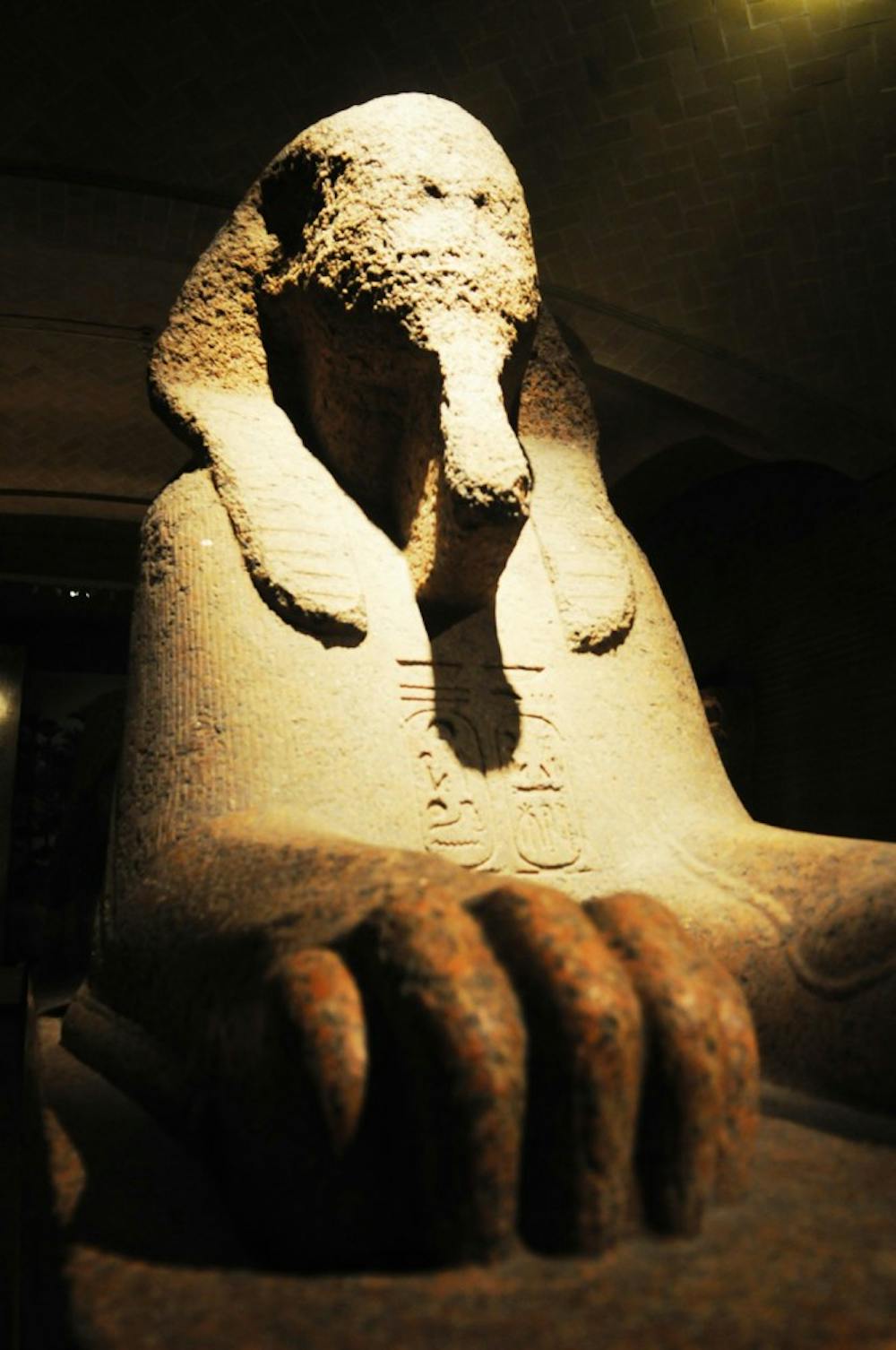While many students might first think of Rome or Greece as the best places to find ancient artifacts, Philadelphia boasts its very own collection right on Penn’s campus.
“I came to Penn because of the museum here,” said Samantha Cox, a College senior studying anthropology. “I would not have known what to do had I not gotten into Penn.”
Attractive to students like Cox, Penn’s Museum of Archeology and Anthropology has collections from all over the world, artifacts ranging from monumental Egyptian sculpture to unique historical objects from the Maya area, according to Loa Traxler, the Museum’s associate deputy director.
“When I was nine, I decided that I wanted to go into archaeology and dig up dead people and work with skeletal remains,” Cox said.
CT scanning skeletons and mummies, excavating artifacts of Irish immigrants in Malvern, Pa., and going on digging trips to Italy are some of the activities Cox is involved in.
“The Museum has given me an opportunity to do all kinds of things in one place, with the collection, exhibit, management, fieldwork and working with experts from diverse fields,” she added.
Museum Director Richard Hodges boasted that there are very few comparable college museums to the Penn Museum, which harbors millions of archeological objects in exhibition and storage. To collect these artifacts, Penn sends out expedition teams rather than buying them from other collectors, he explained. As a result, the Museum has a very detailed record for its “great treasures.”
Like Cox, Wharton sophomore Kate Salkowski is also heavily involved with student groups affiliated with the Museum, working in the Public Information Office at the Museum and as part of the Penn Museum Student Advisory Board. Her interest in marketing, cultural institutions and communications brought her to the Museum, she said.
“It’s such a shame that not more students take advantage of the Museum,” Salkowski said. “I could go on and on about the second largest crystal ball — a giant hunk of flawless crystal — and the third-largest Sphinx in the world!”
She also explained that only a tenth of the Museum’s artifacts are on display, and the rest is kept in storage — including “collections coming in from expeditions,” she said.
“And there is this one box that no one can get to because of the air vent, so no one knows what’s in there,” she added. “There could be shovels in there, but there also could be a mummy!”
Reaching out internationallyThe world-renowned collection at the Museum also draws researching scholars from other countries, like Jaroslaw Zralka, a doctoral student from Poland studying ancient Maya.
“In Poland, we have no specialists in Mesoamerican archeology, and we also don’t have publications, books, reviews, concerning Maya or Central American archeology,” he said. “So if you want to write dissertations or do research [on the topic], you have to come to places like UPenn, with rich resources like the library here.”
Incorporating the Museum into class curriculum
A number of classes on subjects like art history and anthropology integrate the Museum collections into their curriculum. For example, Nancy Steinhardt, professor of East Asian Art, teaches “Chinese Painting,” “East Asian Art and Civilization” and “Life and Death in Ancient China and Ancient Egypt,” for which recitations meet at the Museum.
“For anyone teaching art history, especially when there is a museum like Penn’s on campus, she should feel that part of her job is to convey to students the excitement in seeing the works of art firsthand,” she explained. “Art history isn’t just about looking at pictures on screen or in books.”
College junior Natalie Feigenbaum took Chinese Painting with Steinhardt and agreed that personally observing the art makes a difference in learning.
“Something Steinhardt talks about is how magnificent and incredible the works are — sure, you can glaze over them in a book, but I’m actually in awe when I see statues or paintings of emperors in person,” Feigenbaum said.
Steinhardt said the Museum’s rich East Asian art collection allows her to teach a class solely based on the artifacts. She added that she makes a “strong effort to include the objects in the Museum in [her] lectures.”
Students stepping up: Clio Society
In October, Penn Museum undertook a new endeavor called the Clio Society, training undergraduates to become tour guides or docents. One group is studying about the Egyptian gallery while another is focusing on the Etruscan and Roman collection, explained Dori Panzer, the docent coordinator.
College sophomore Alexandra Olsman described getting trained as “almost like taking another class.”
College sophomore Catherine Krabbenschmidt, another Clio member, elaborated that they had to write a 20-page paper and memorize a seven-minute presentation about an artifact.
Panzer anticipated that Clio members will bring a “strong understanding about doing research and how to make that research an engaging and interactive process.”
Appreciating the artifacts
Olsman agreed with the general sentiment that the Museum is “one of the most under-appreciated resources at this school.”
“Unless they have to go to the Museum library, they don’t come here,” Krabbenschmidt said. “And even then, they have the book delivered.”
In addition to its collection, the Museum has more to offer to students: “Gardens are really pretty, and I love the tables by the pond,” Salkowski said. “It is an absolutely gorgeous place to read and study.”



